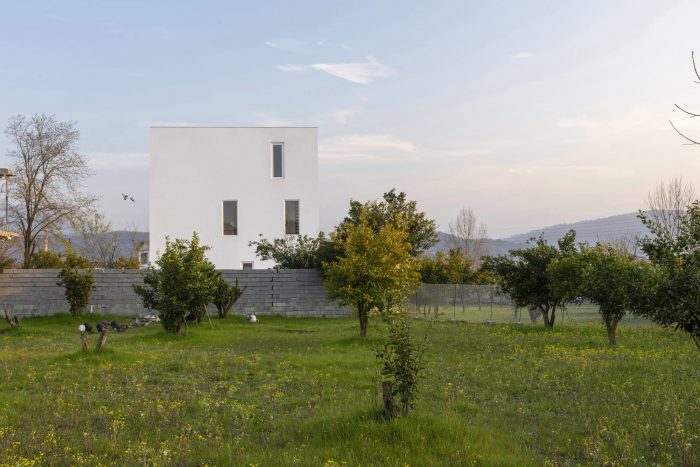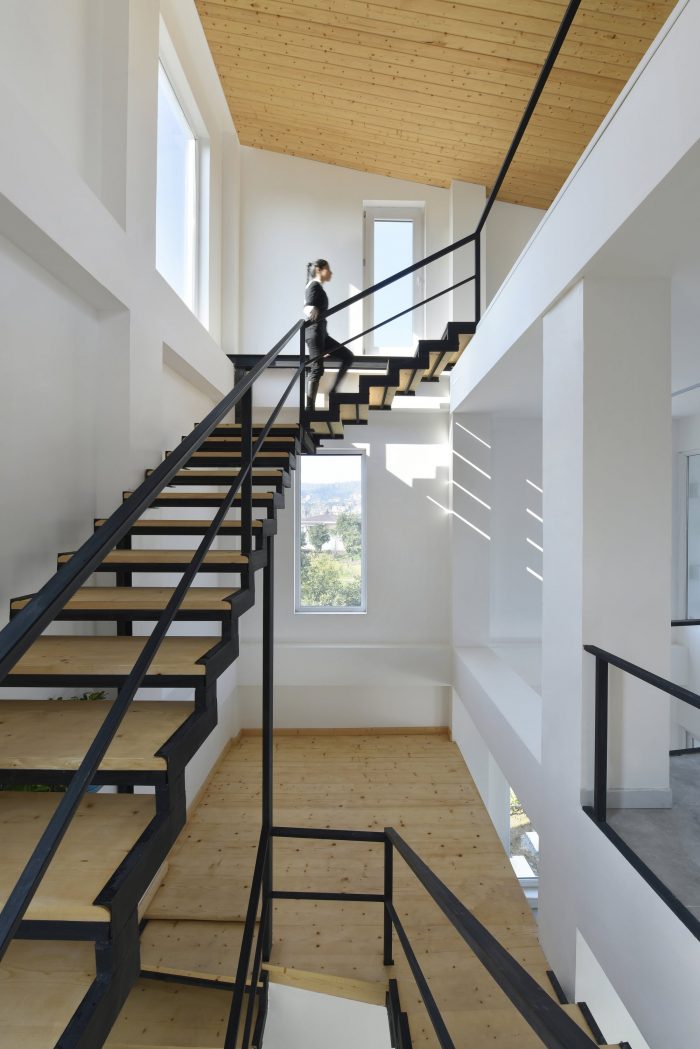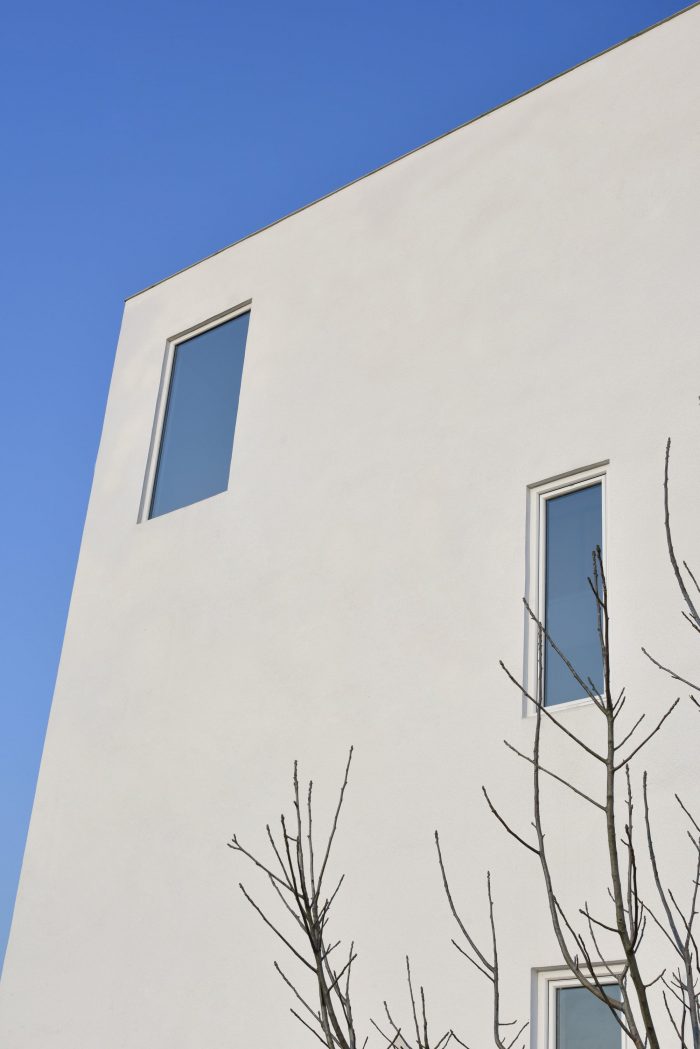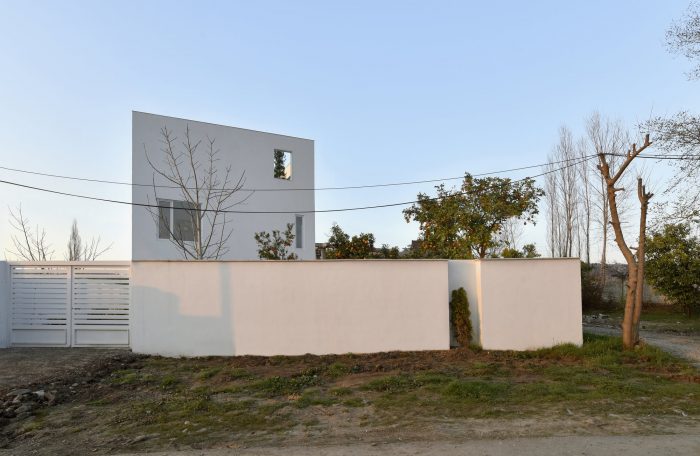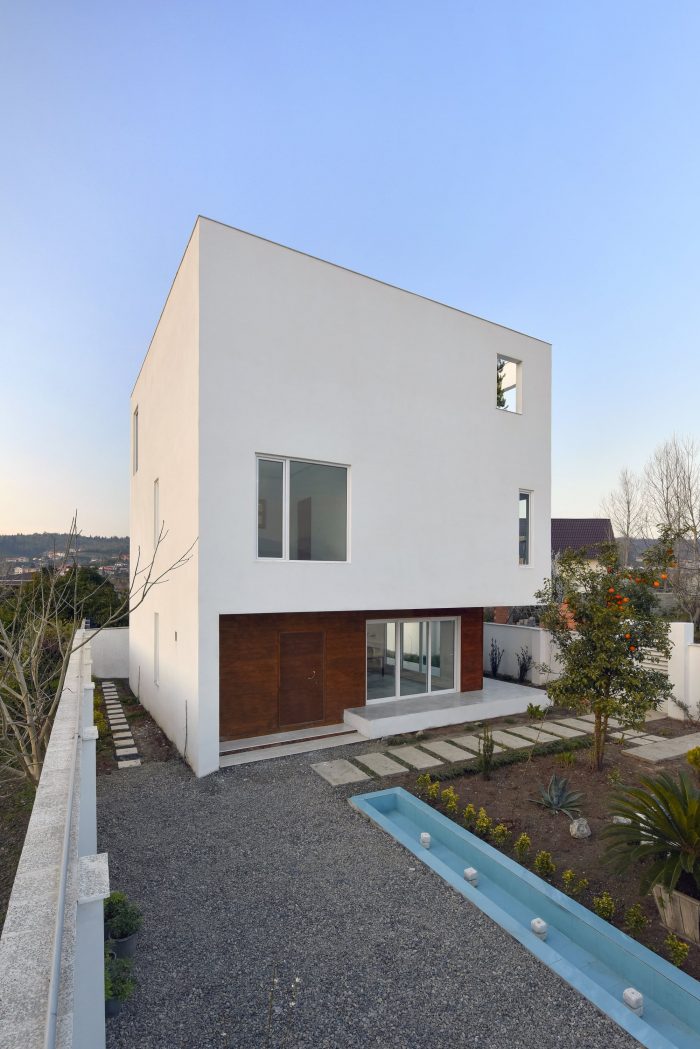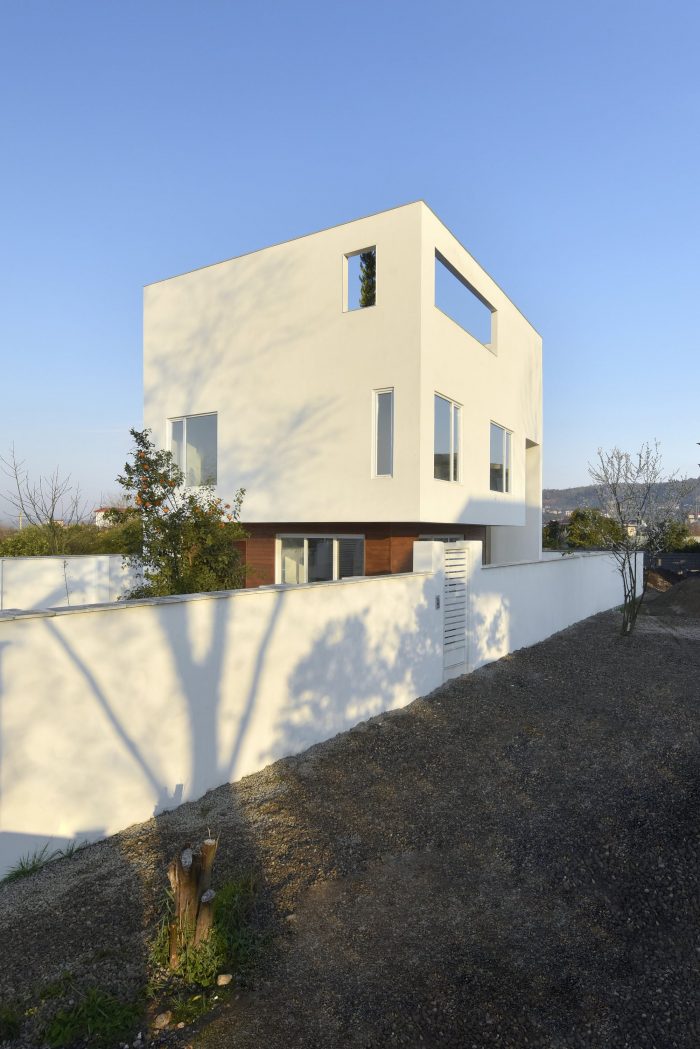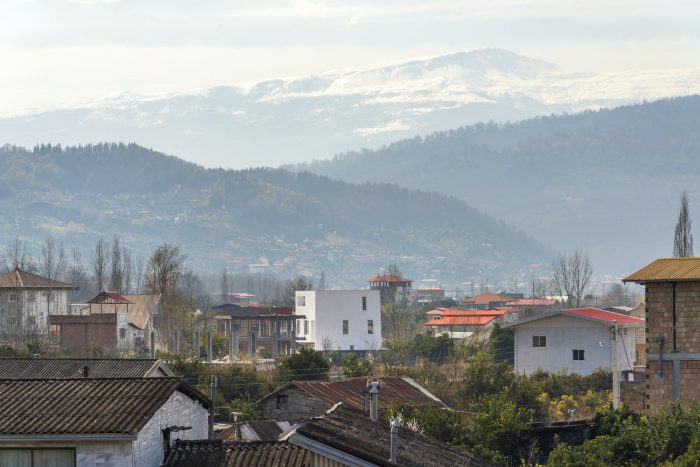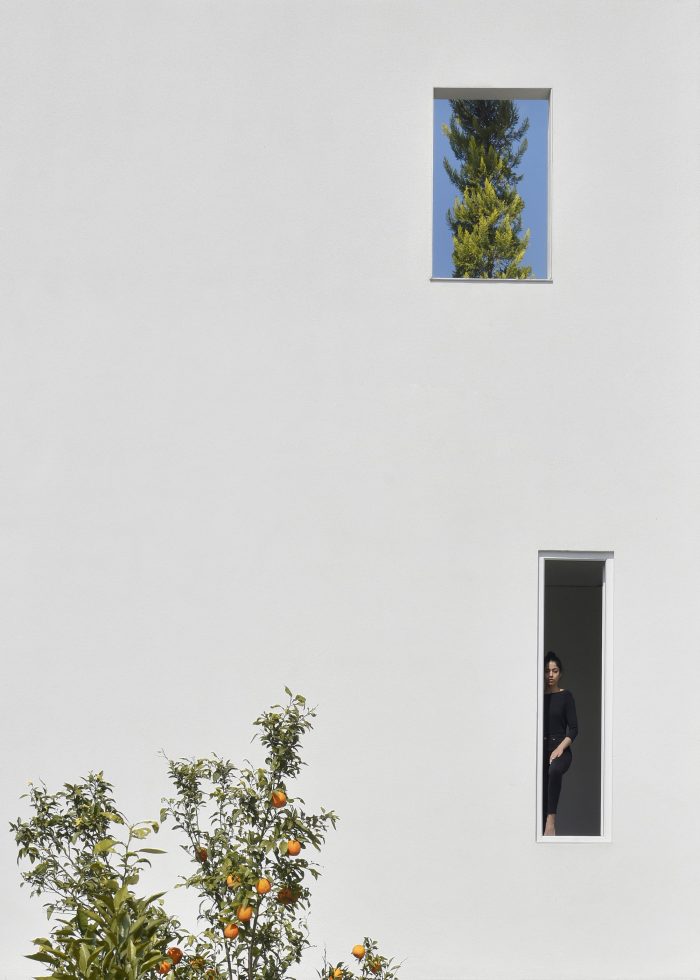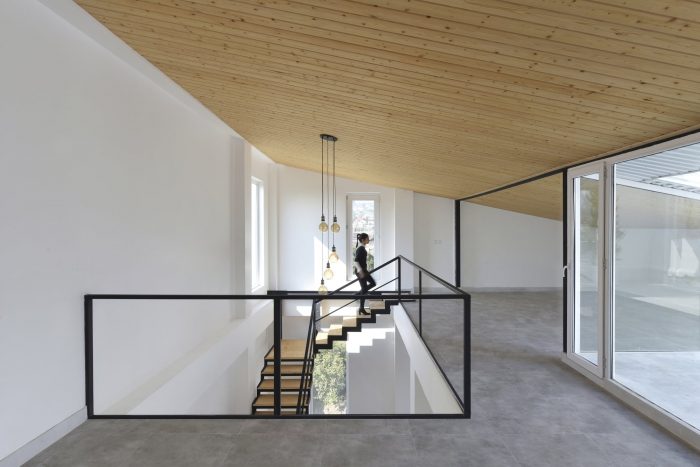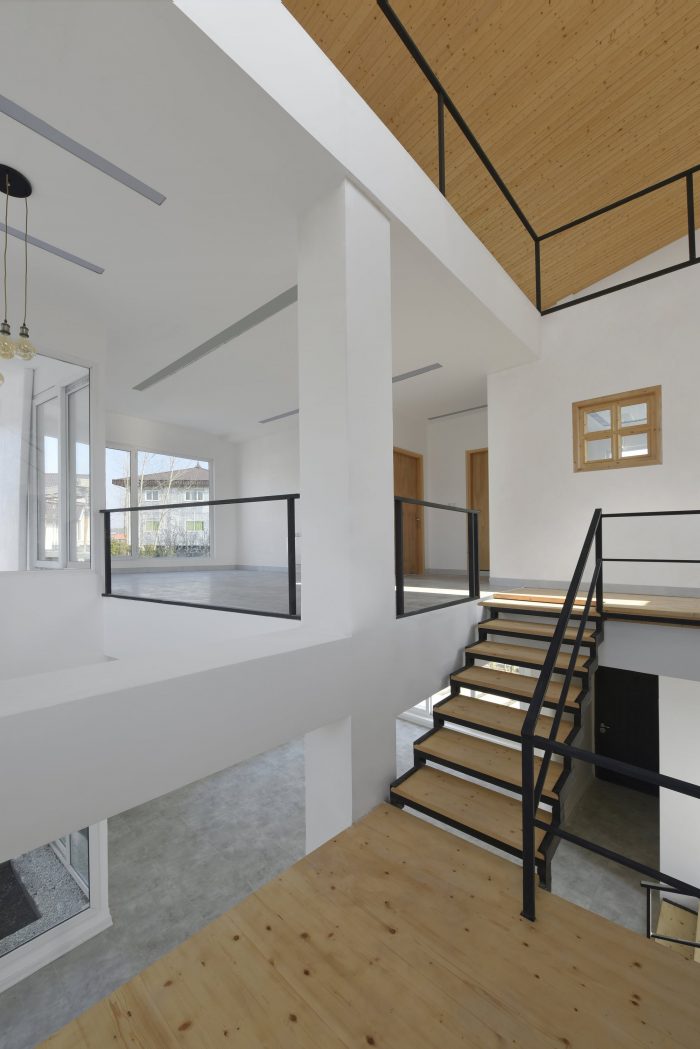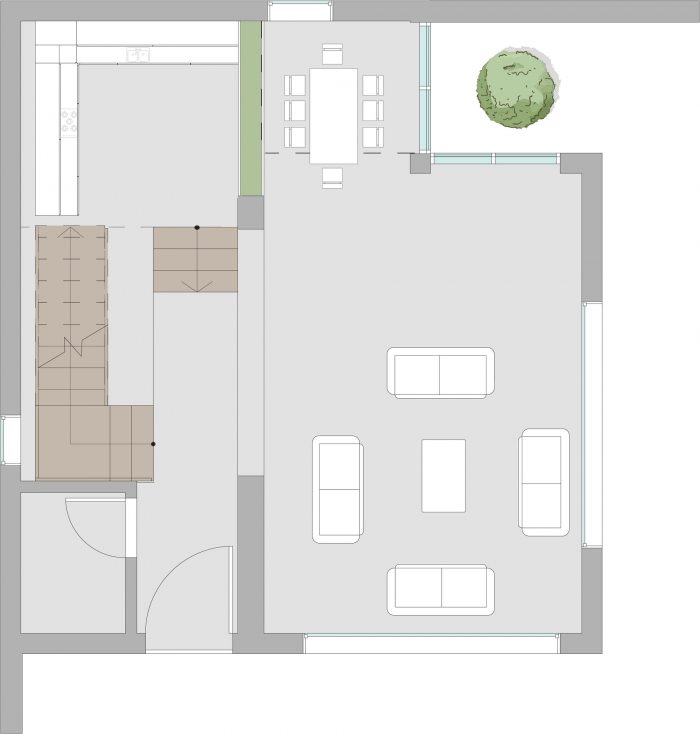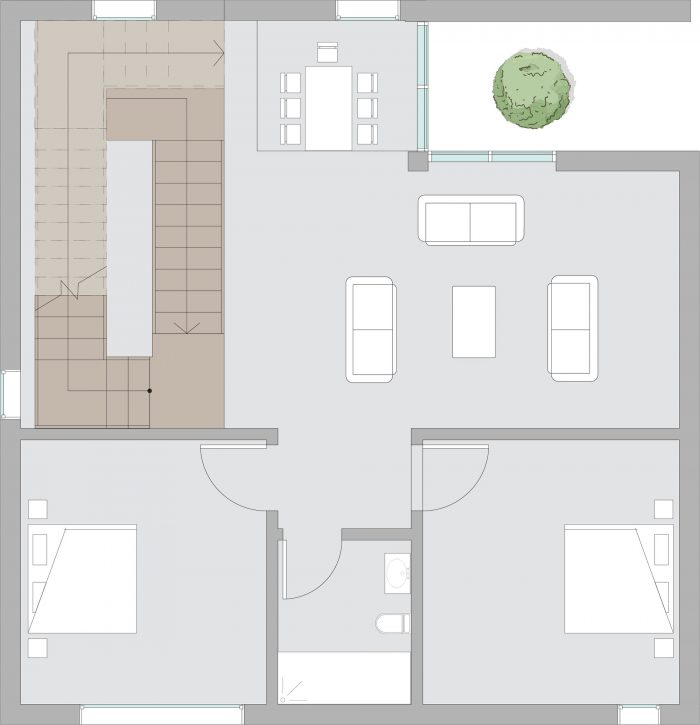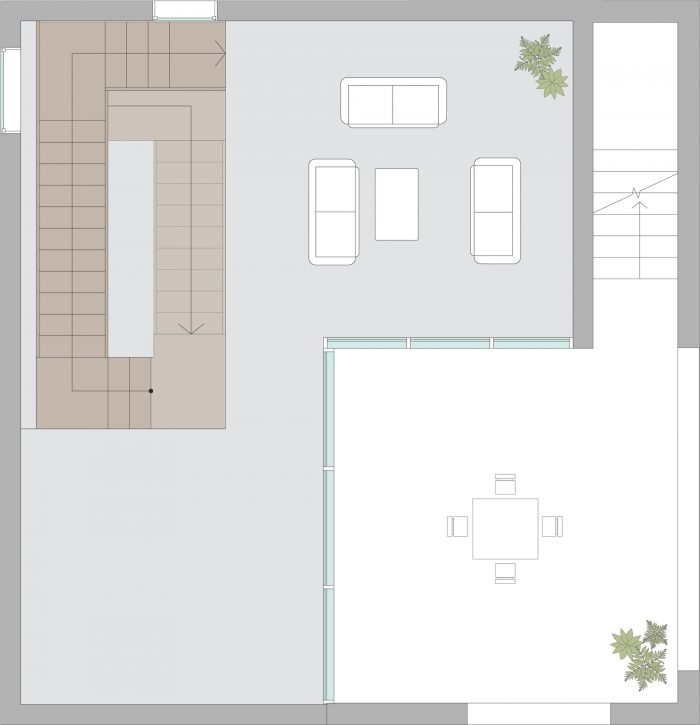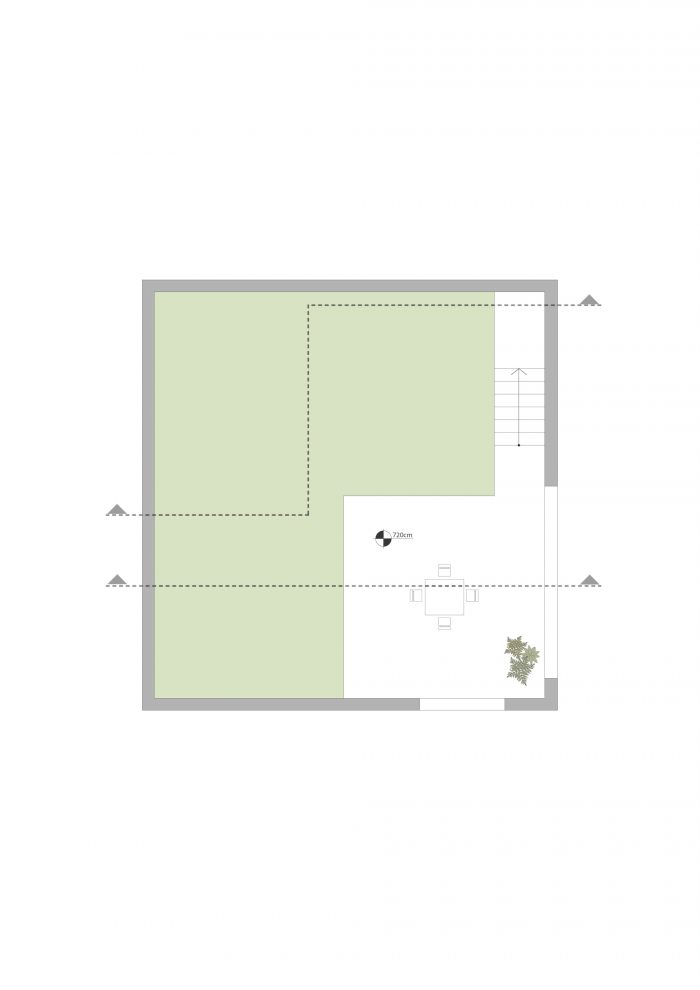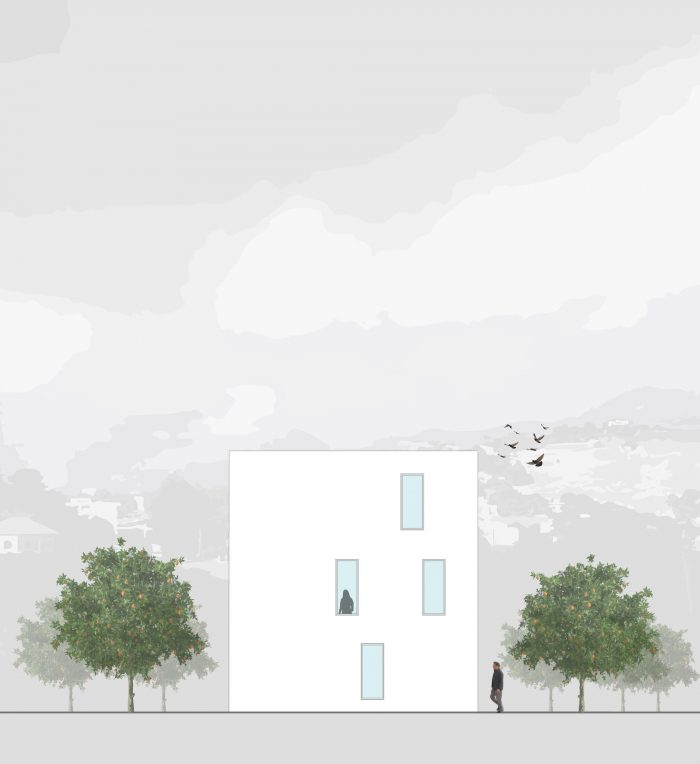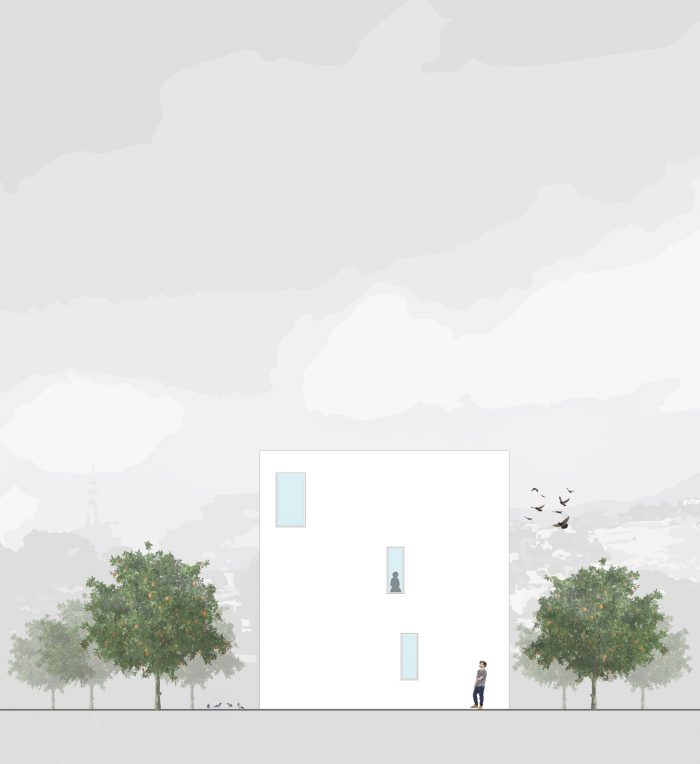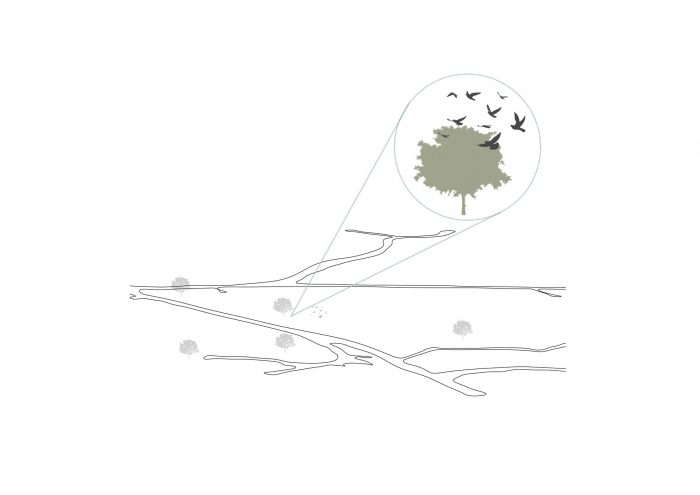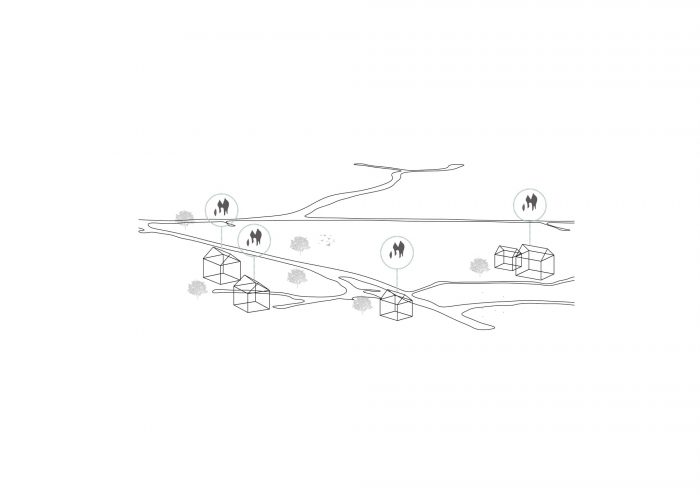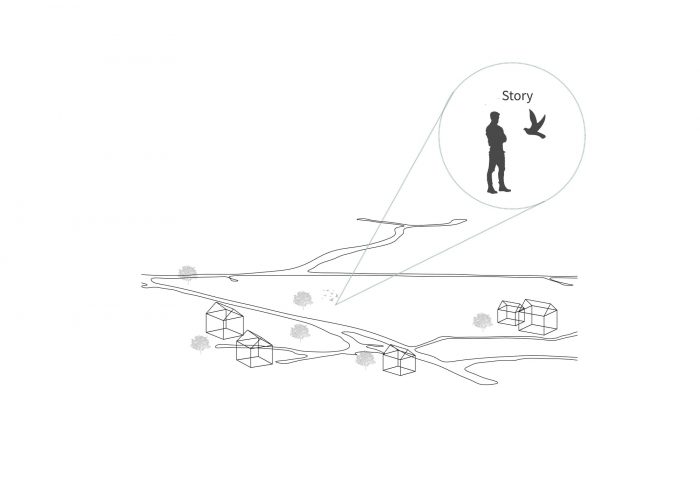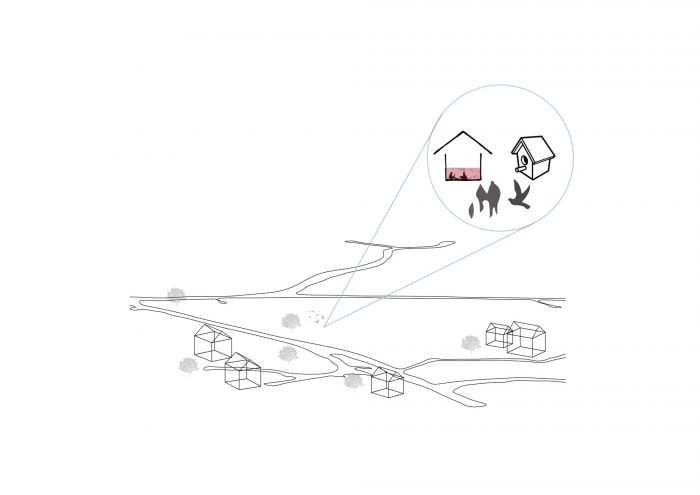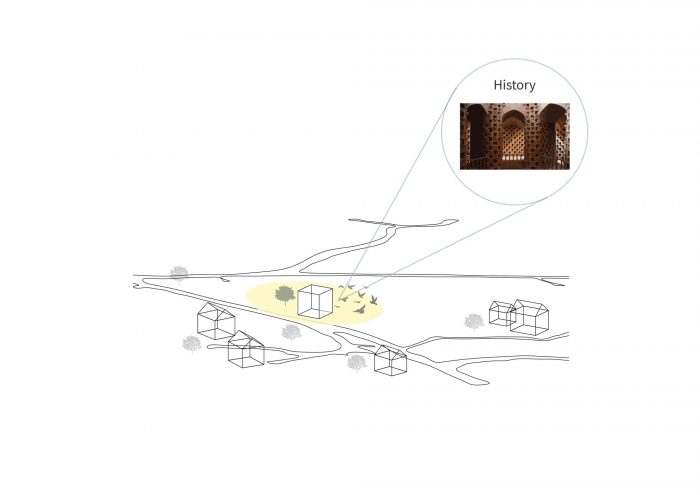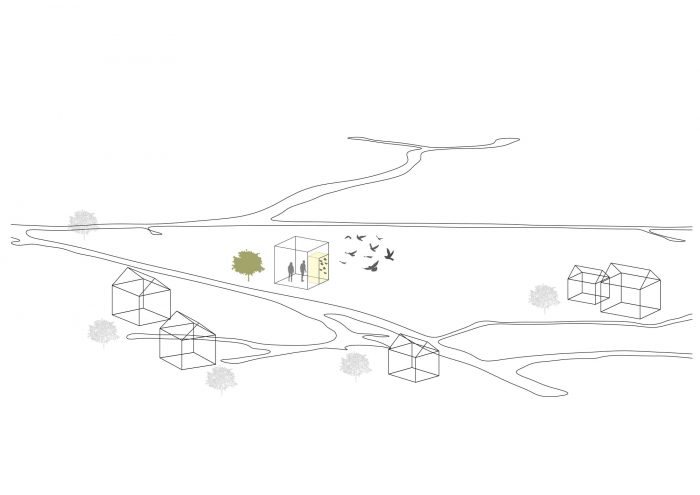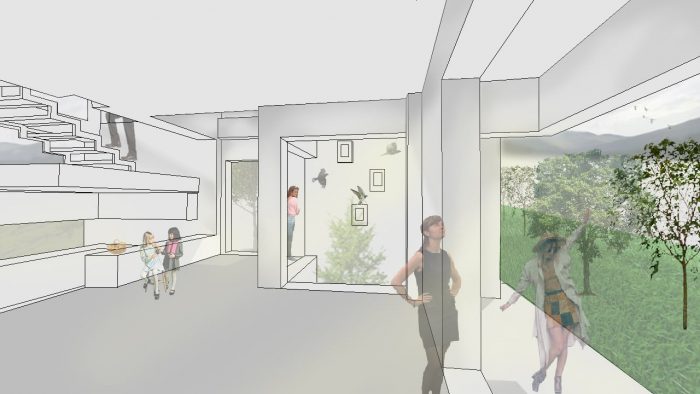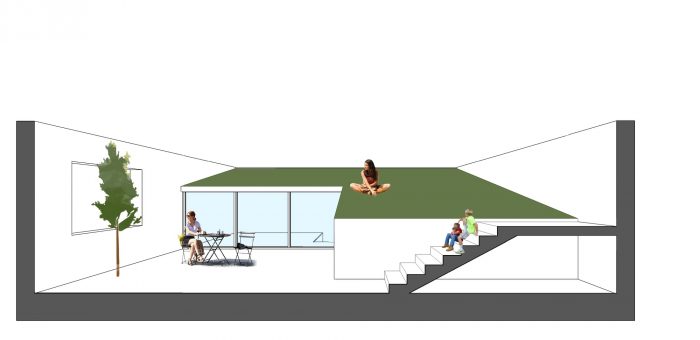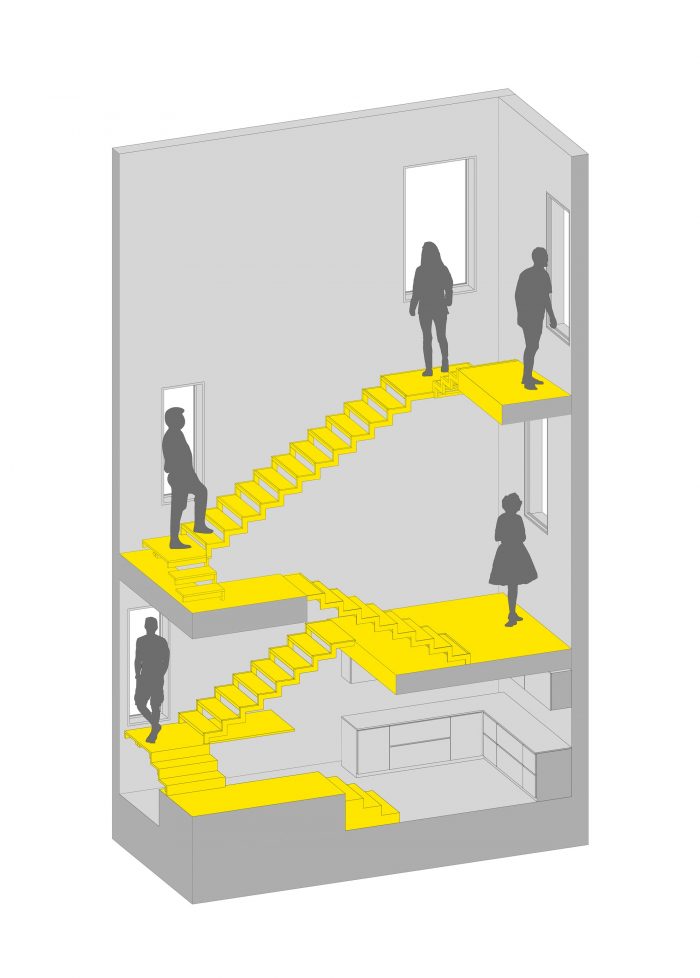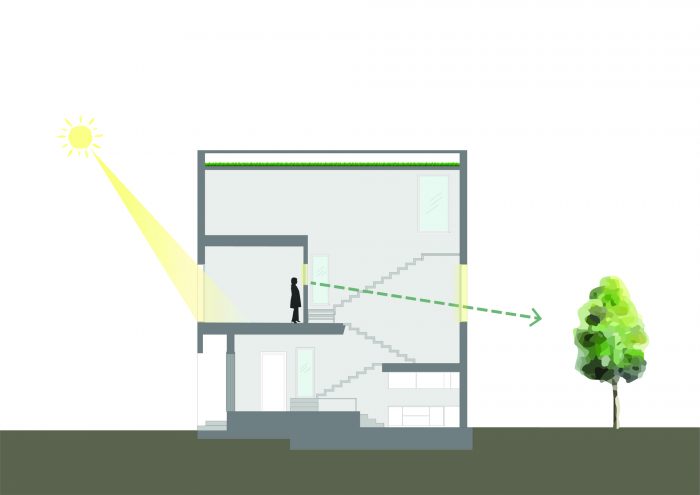设计的基本概念是为人类和鸟类创造一个共存的空间。在参观了项目现场后,建筑团队注意到那里广泛存在的鸟类。他们决定设计一个人们可以与它们毗邻而居的房子。灵感来自于伊朗历史上的鸽子笼,由于使用了玻璃材料和周围的透明度,室内空间的一部分充当了天井。这个房子已经成为一个可以进行更多互动的地方;鸟类。这是一个人类和鸟类的房子。在这方面,受伊朗历史上的鸽子笼的启发,一部分室内空间被专门用于此目的。室内空间是围绕着鸟类生活的天井形成的,通过创造空间的横断面游戏和水平差异,以及楼梯的特殊设计和楼梯内的孔洞。
The basic concept of the design was to create a space for co-existence between humans and birds. After visiting the project site, the architecture team noticed the widespread presence of birds there. They decided to design a house where people could live next to them. Inspired by Iranian historical dovecotes, a part of interior space that acts as a patio due to the use of glass material and the transparency around it. This house has become a place for more interaction; birds. This is a house for humans and birds. In this respect, inspired by Iranian historical dovecotes, a part of interior space was dedicated for this purpose. The interior spaces are formed around the patio where the birds live, by creating cross-sectional play and level differences in the spaces, as well as the special design of the stairs and the holes inside them.
除了创造不同的视线序列和外部视角外,我们会看到光线从不同的角度辐射过来,进而随着入射角的改变而玩起了光的舞蹈。此外,这种不同角度的窗户布局设计,在内部形成了与该地区气候相一致的风向。楼梯箱的设计方式在每一层都是不同的,作为垂直循环的核心,它已经演变成一个令人兴奋的空间,邀请你去探索空间。由于这个空间的重要性,甚至有一扇窗户从其中一间卧室开向楼梯,这样用户除了可以从外墙的房间窗户看到楼梯部分的景色外,还可以看到楼梯的游戏。
In addition to creating different sequences of view and the outside perspective, we will see the light radiating from different angles, and consequently playing the dance of light with a change in the angle of incidence. Moreover, this type of window layout design at different angles creates a draught inside that is consistent with the climate of the area. The staircase box is designed in such a way to be different on each floor, and as the centerpiece of vertical circulation, it has evolved into an exciting space that invites you to explore the spaces. Due to the importance of this space, even a window opens to the staircase from one of the bedrooms so that the user can see the stairway section game in addition to the view from the room window on the facade.
此外,在这个小窗户的前面,还有一个更大的窗户面向楼梯的外面,让人可以从院子的另一边看到树。因此,为了保持体量的纯粹性,安装了一个隐藏在墙壁后面的绿色倾斜屋顶来应对这个问题,同时也创造了一个不同的绿色屋顶空间,成为项目中最令人愉快的空间之一。总而言之,室内和建筑屋顶的设计是为了让用户在周围环境中拥有自己的后院,同时也邀请你进行互动。根据设计思路,为了尊重自然,在建筑中使用了廉价的、有时是回收的材料。
Besides, in front of this small window, there is a larger window facing the outside of the staircase that allows one to view the tree from the other side of the courtyard. Therefore, to maintain the purity of the volume, a green sloping roof is installed hidden behind the walls to respond to this problem as well as to create a different green roof space that has become one of the most enjoyable spaces in the project. All in all, the interiors and building roof are designed to allow the user to have their backyard in the surroundings, while also inviting you to interact. According to the design thinking line in order to respect nature, cheap and sometimes recycled materials were used in the construction of the building.
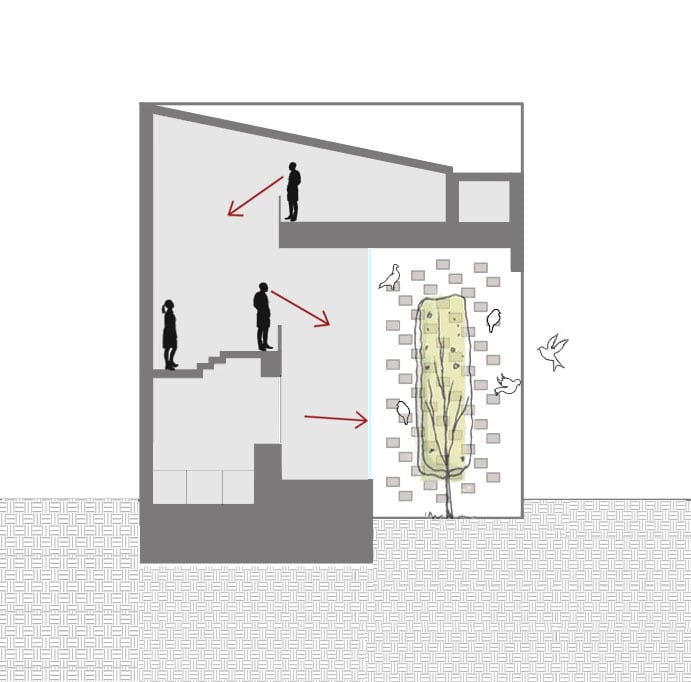
Architects: Keivani Architects
Area : 210 m²
Year : 2022
Principal Architects : Nima Keivani and Sina Keivani
Design Team : Mahboobeh Shakeri, Sahar AminalSharieh Najafi
Graphic : Mahsa Kiani & Azin Hadizadeh
Project Manager : Nima Keivani
Bim Manager : Sina Keivani
Client : Masoud Adnani
Site Area : 332 m2
Project Start Date : September 2017
Cost : 22000$
City : Tehran
Country : Iran


